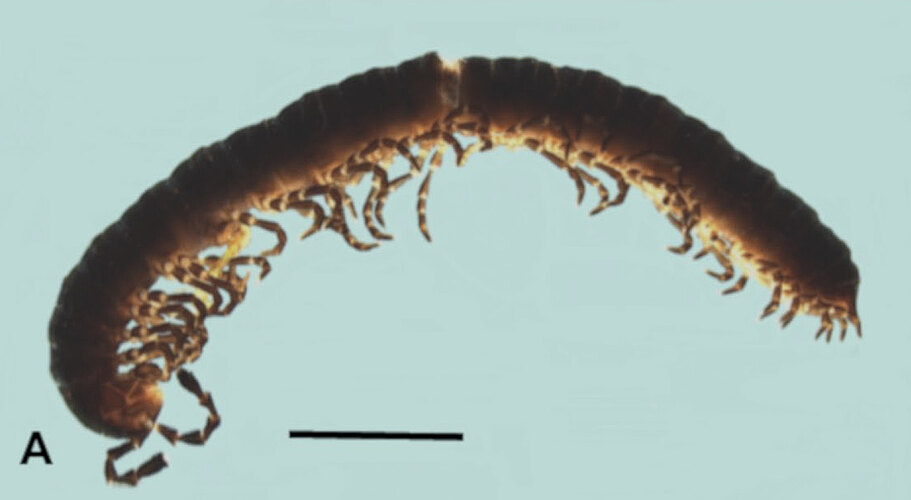Area C Antichiropus Millipede Antichiropus pendiculus Car, 2019
Fauna Portal species: 11193Diagnosis
(after Car et al. 2019) Male Antichiropus pendiculus are most similar to A. cirratus: both have long, slender, curled solenomeres, distinct from those of all other Pilbara species. Antichiropus cirratus has, however, a noticeable protuberance on the distal end of the femorite, lacking in A. pendiculus. The most noticeable feature of A. pendiculus is that it lacks a solenomere process of any description, though it does conform to the genus in its other characteristics.
Antichiropus pendiculus is currently listed as Priority 1 (P1) species ("poorly-known species - known from few locations, none on conservation lands") in Western Australia.
Linnean Holotype
Australia
- Western Australia
Fauna Portal Records
The map shows all records that have been verified as part of the Fauna Portal project and may not represent the true distribution of a species. Specifically, for described species, check the link to the Atlas of Living Australia on this page for potential wider distributions. Fauna Portal Reference specimens and Linnean types are shown in red. If you identified a specimen that exceeds the distribution of an undescribed species as illustrated here, please contact the Fauna Portal team who can assist with the lodgement of the specimen in a public institution and display on the map.
Similar Species
Publications
Car C.A., Harvey M.S., Hillyer M.J. & Huey J.A. (2019): The millipede genus Antichiropus (Diplopoda: Polydesmida: Paradoxosomatidae), part 3: species of the Pilbara bioregion of Western Australia. Zootaxa. 4617: 1 - 71
All classes
- Arachnida
- Crustacea
- Entognatha
- Gastropoda
- Insecta
- Orthoptera - Caelifera (Grasshoppers)
- Hymenoptera excl. Formicidae (bees and wasps)
- Blattodea s. str. (Cockroaches)
- Coleoptera (Beetles)
- Dermaptera (earwigs)
- Diptera (flies, mosquitos)
- Entomobryomorpha (slender springtails)
- Hemiptera - Heteroptera (True Bugs)
- Hemiptera - Sternorrhyncha (aphids, scales etc.)
- Hemiptera - Auchenorrhyncha (cicadas, planthoppers)
- Hymenoptera - Formicidae (Ants)
- Trichoptera (Caddisflies)
- Zygentoma (silverfish)
- Myriapoda

